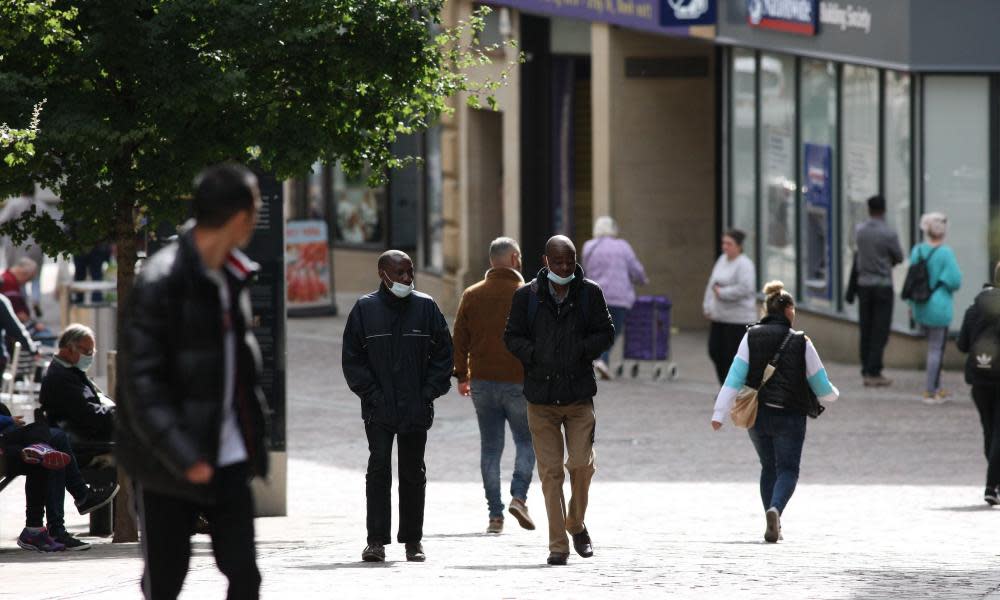Covid second wave hits recovery in UK high streets, data suggests

The recovery in UK’s bricks and mortar retail sector has gone into reverse, according to new data that shows footfall has declined during September amid new pandemic restrictions and concerns about a second wave of coronavirus infections.
Footfall on UK high streets and at other retail destinations was 33% lower last week compared to the same period in 2019, according to data from the British Retail Consortium and ShopperTrak. That represented a marked deterioration since the first week of September, when footfall was only down by 24% year-on-year.
At the start of the UK-wide lockdown in March, footfall was down by more than 80% even as online sales boomed, but over the summer the number of people visiting shops had increased steadily as lockdown restrictions were eased and the number of Covid-19 cases declined.
Separate footfall figures from data company Springboard showed a similar decline in UK-wide footfall last week, as high streets suffered a big drop in custom. The 10pm curfew on pubs in England appeared to have a particularly strong effect, with the number of people on the streets dropping by more than a third between 10pm and midnight on Friday.
The decline in footfall could cause further difficulties for landlords as quarterly rent day falls on Tuesday, when many property owners will collect payments covering the previous three months.
Commercial tenants across the country have withheld rent payments in recent months as they struggled with cash flows, and the government this month extended an April ban on evictions of business tenants until the end of the year, in order to protect businesses hit by the pandemic.
Data from technology company Re-leased, which facilitates rent payment, suggested that commercial property landlords had collected 68% of the rent due for the April to June period, in a snapshot taken 60 days after rent day in June. That was in line with the 67% in the January to March quarter but significantly lower than the 84% rate recorded in December, before the coronavirus was detected outside China.
Caleb Dunn, a commercial analyst at Re-leased, said there was unlikely to be a large jump in payments this quarter given continued uncertainty around the retail environment.
There was also evidence from previous quarters that landlords were increasingly giving rental discounts to tenants, another possible sign that tenants were struggling, he said.
Ian Wilkinson, a partner at law firm Osborne Clarke who regularly advises landlord clients, said landlords were braced for hospitality tenants in particular to struggle in the coming months after the introduction of the “rule of six” in England, earlier closing times and various local lockdowns.
Some landlords are expecting to collect between only 20% and 50% of their rents for the quarter from hospitality businesses, he said, but retail landlords were slightly more hopeful, expecting to collect between 30% and 70% of rents owed.
Richard Lim, chief executive of Retail Economics, a consultancy, said that retail landlords face “significant challenges” ahead because of their dependence on clothing and footwear retailers. Clothing and footwear accounts for about 40% of space in shopping centres, but the subsector has been hit hard by lower demand for new outfits from people stuck at home, Lim said.
The uneven retail recovery has meant that retail parks – more spacious for distancing and less reliant on public transport – have proven more resilient, while companies with strong online operations have also benefited, Lim said.


